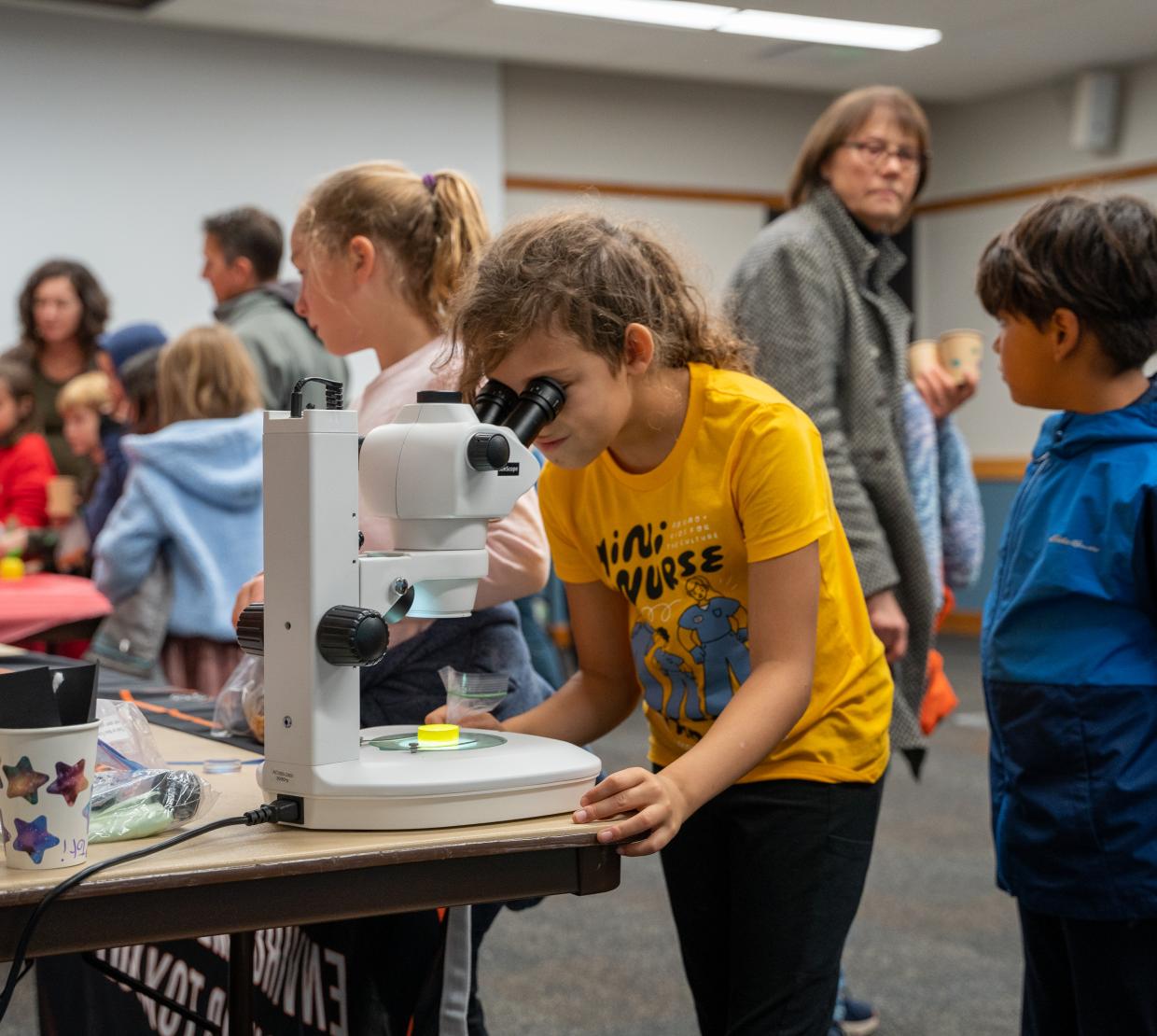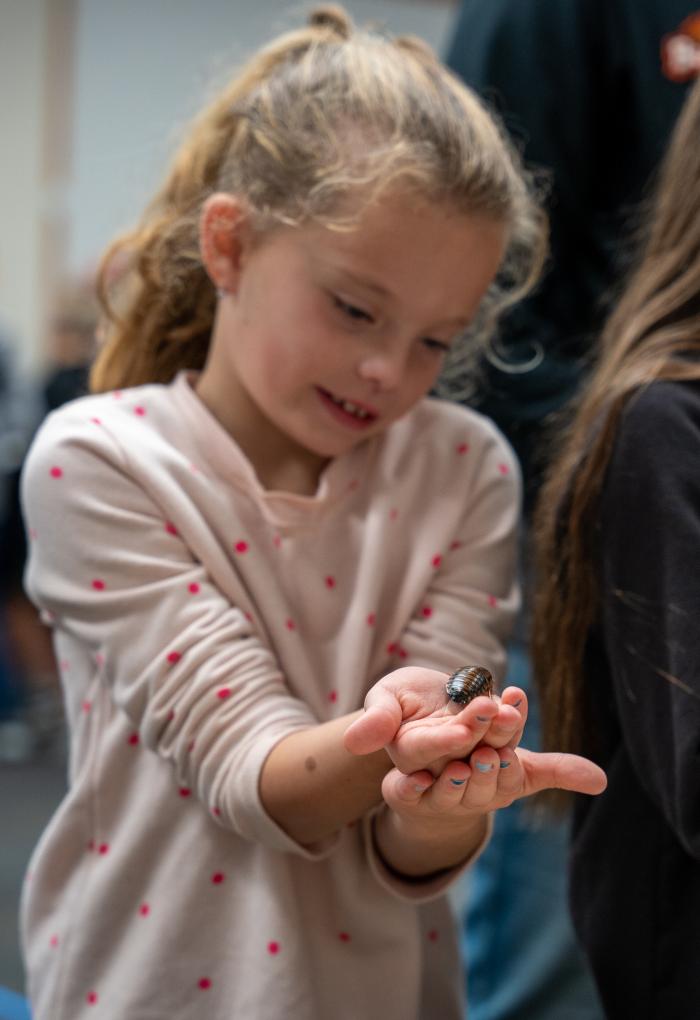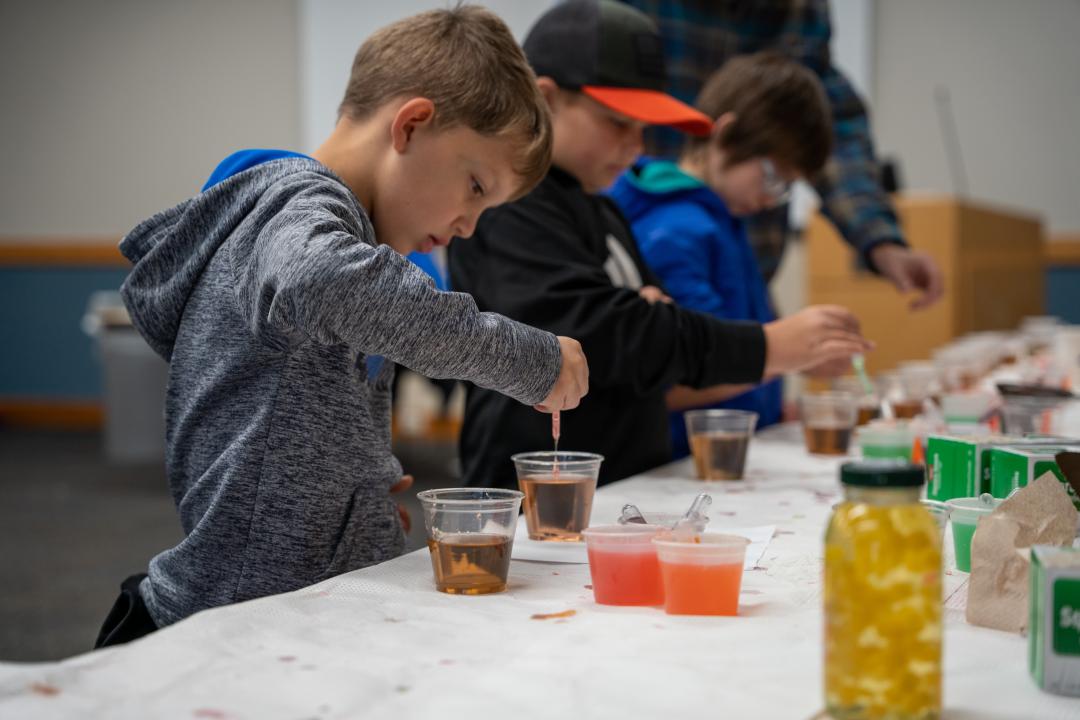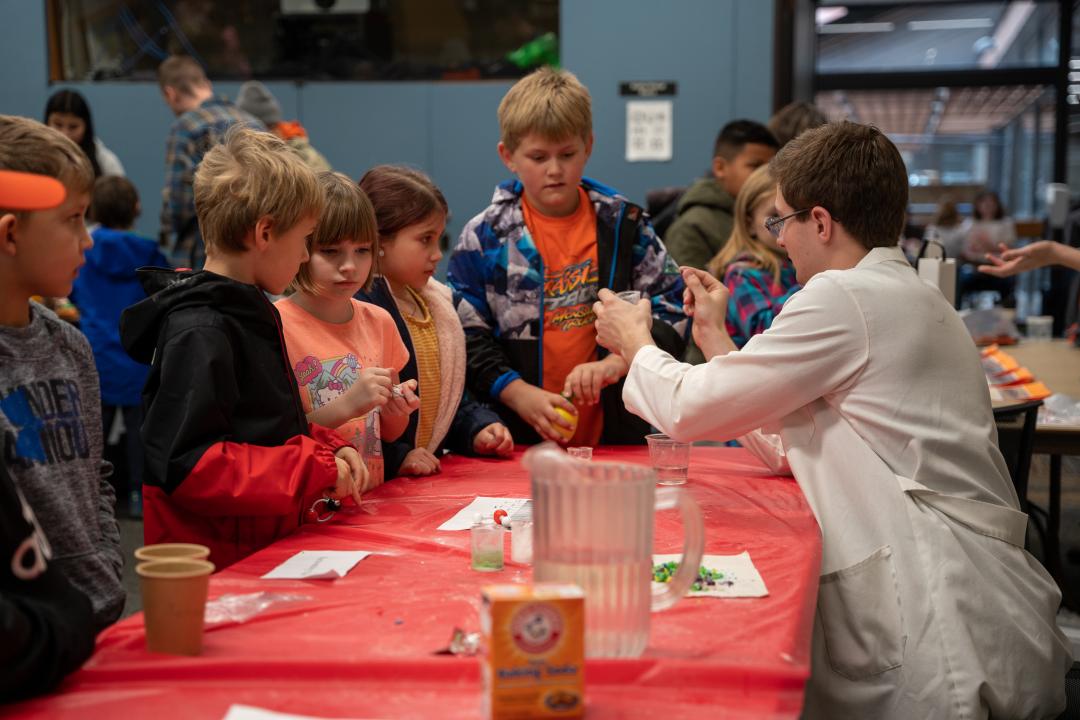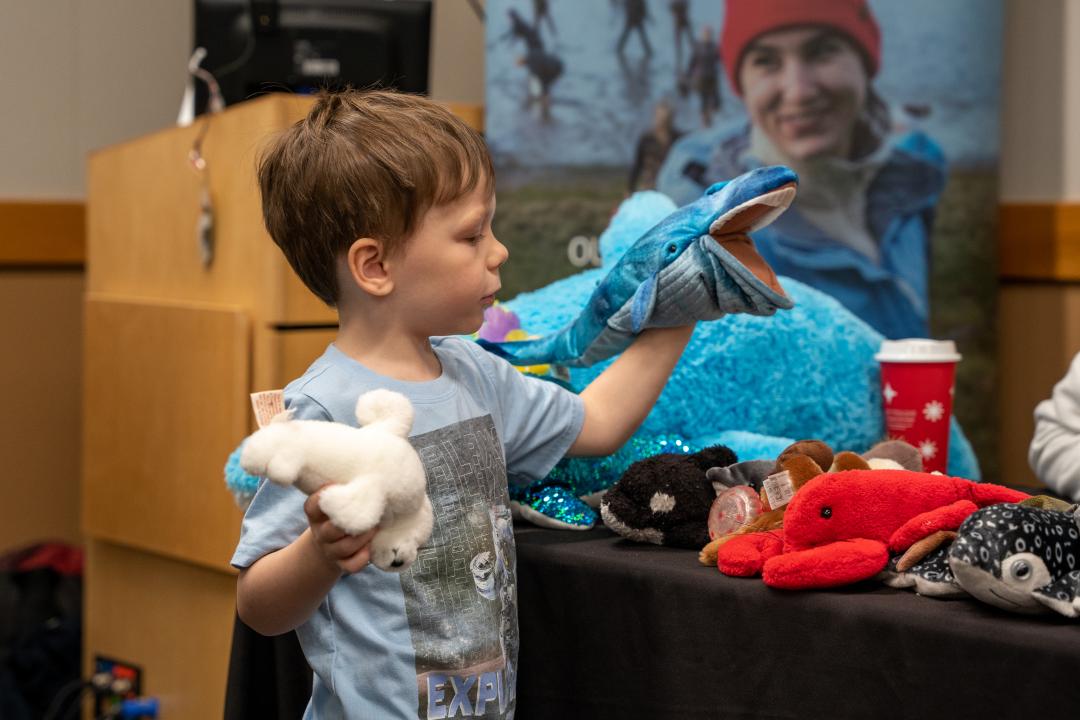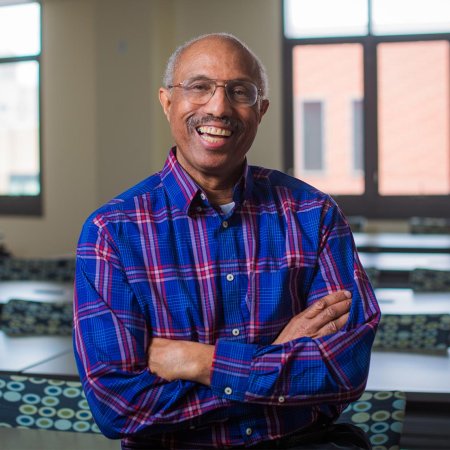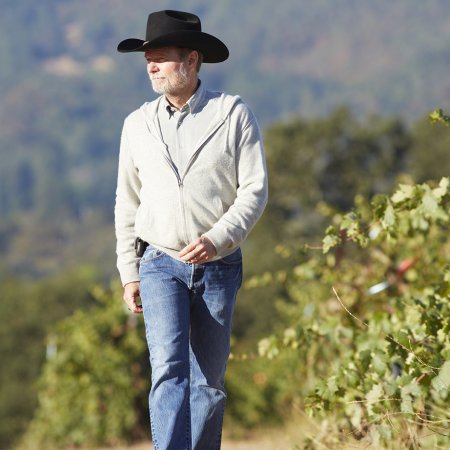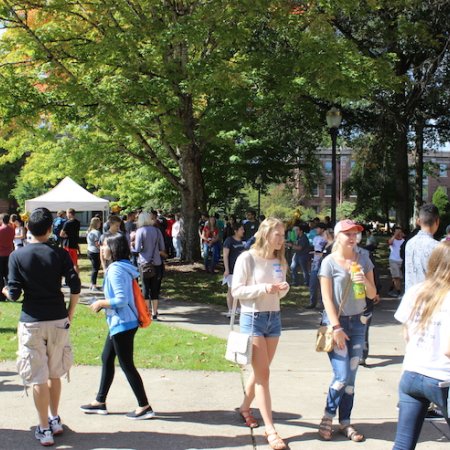The ‘things that scientists do’
Clubs and organizations from within Oregon State put together a unique spread of activities for students to choose from.
Ocean11, a marine club dedicated to the ocean and coasts, had three tables students could explore. One showcased diverse sand samples from across the world, ranging from the black volcanic rocks of Hawaii to sand that wasn’t rock at all. Students were shocked to learn that star sand, the rarest kind, was instead made of the star-shaped remains of microscopic organisms.
Graduate students from the Department of Integrated Biology also ran tables where students could see preserved jellyfish and anemone specimens as they learned about coral bleaching. Lauren Schreck, a PhD biology student, saw the event as an excellent opportunity to engage the younger generation in science.
“It’s really rewarding to be able to translate your research into something you can share with kids and with the community, and getting to see enthusiasm from kids about things you’re actively working on is really fulfilling,” she said.
The many branches of science available to experience gave the event an air of excitement. Many teachers were thrilled to see their students avidly participating.
“I’ve heard the word ‘cool’ from our students probably 58 times. Everything is cool,” said Meryl Bromley from Sublimity Elementary School.
John King, another teacher from Sublimity, commented, “You see the kids’ eyes getting wide, looking around at all the activity choices. They want to run in all different directions. They’re eager and excited to get to everything.”
Discovery Days continues to provide students opportunities in STEM beyond the classroom with passionate Oregon State students and researchers. The event rings true to the College of Science’s aim to inspire new generations of scientists.
“One of my students was all excited, talking about ‘the things that scientists do,’” said Kittelson from Monmouth Elementary. “When we come back today and we talk about what we were able to explore and learn, there’s going to be a million different things that they say. They get to see what they don’t know, and it gets their brains thinking.”
